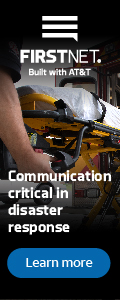New Resources Address Important EMS Issues
March 26, 2024
 The National Highway Traffic Safety Administration’s Office of EMS provides the following updates on highway safety regulations, rural EMS education, and special pathogens.
The National Highway Traffic Safety Administration’s Office of EMS provides the following updates on highway safety regulations, rural EMS education, and special pathogens.
Updating the Highway Safety Improvement Program
The Federal Highway Administration has announced a notice of proposed rulemaking to update the Highway Safety Improvement Program regulations. These regulations address provisions in the Infrastructure Investment and Jobs Act, also known as the “Bipartisan Infrastructure Law,” and reflect current priorities and state-of-practice. The proposed changes are designed to strengthen and advance the safety and equity priorities of the Department of Transportation’s National Roadway Safety Strategy and help states make safety gains to eliminate fatalities and serious injuries on roadways. Comments must be received by April 22. Learn more.
Quality Improvement Course for Rural EMS
The Rural EMS Quality Improvement Basics Course, from Stratis Health, introduces rural EMS providers to the concept of quality improvement (QI). The program, which was initially designed for the staff of healthcare organizations, has been modified to meet the needs of rural EMS by dividing the QI concept into three distinct levels that build upon each other. The Rural EMS Quality Improvement Basics Course links to the relevant portions of the original healthcare program, while also providing content and examples relevant to rural EMS providers. Learn more.
EMS Model Procedural Guidelines for Special Pathogens
The National Emerging Special Pathogens Training & Education Center has launched a new set of model procedural guidelines designed to manage high-consequence infectious disease (HCID) patient encounters. EMS Model Procedural Guidelines for Special Pathogens is designed to improve the safety of EMS professionals as well as safeguard public health. EMS agencies are encouraged to use the guidelines to create SOPs for transporting and managing patients with a HCID. The guide features step-by-step instructions that can be incorporated into EMS agencies’ existing policies and procedures. View the guidelines.



